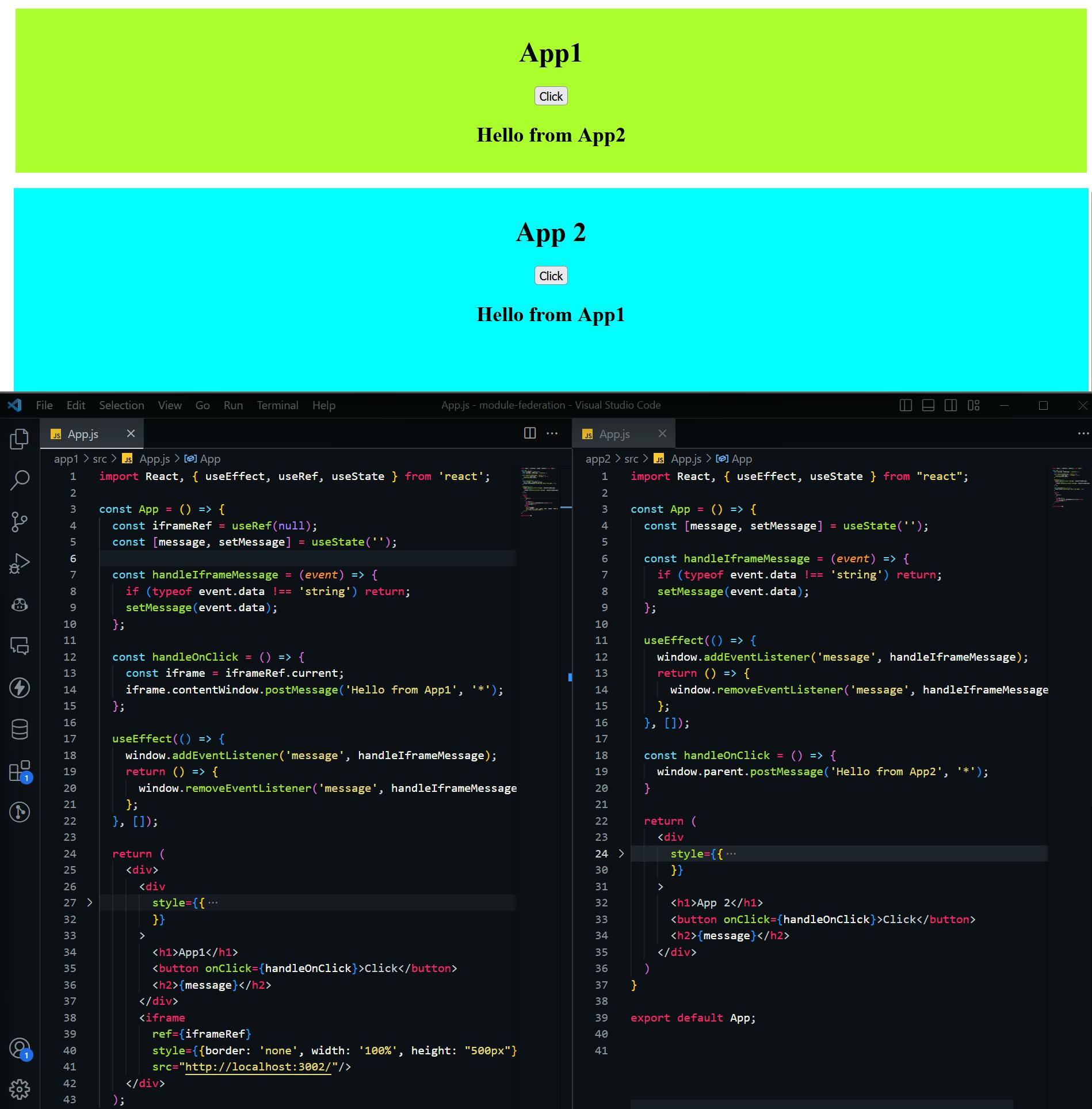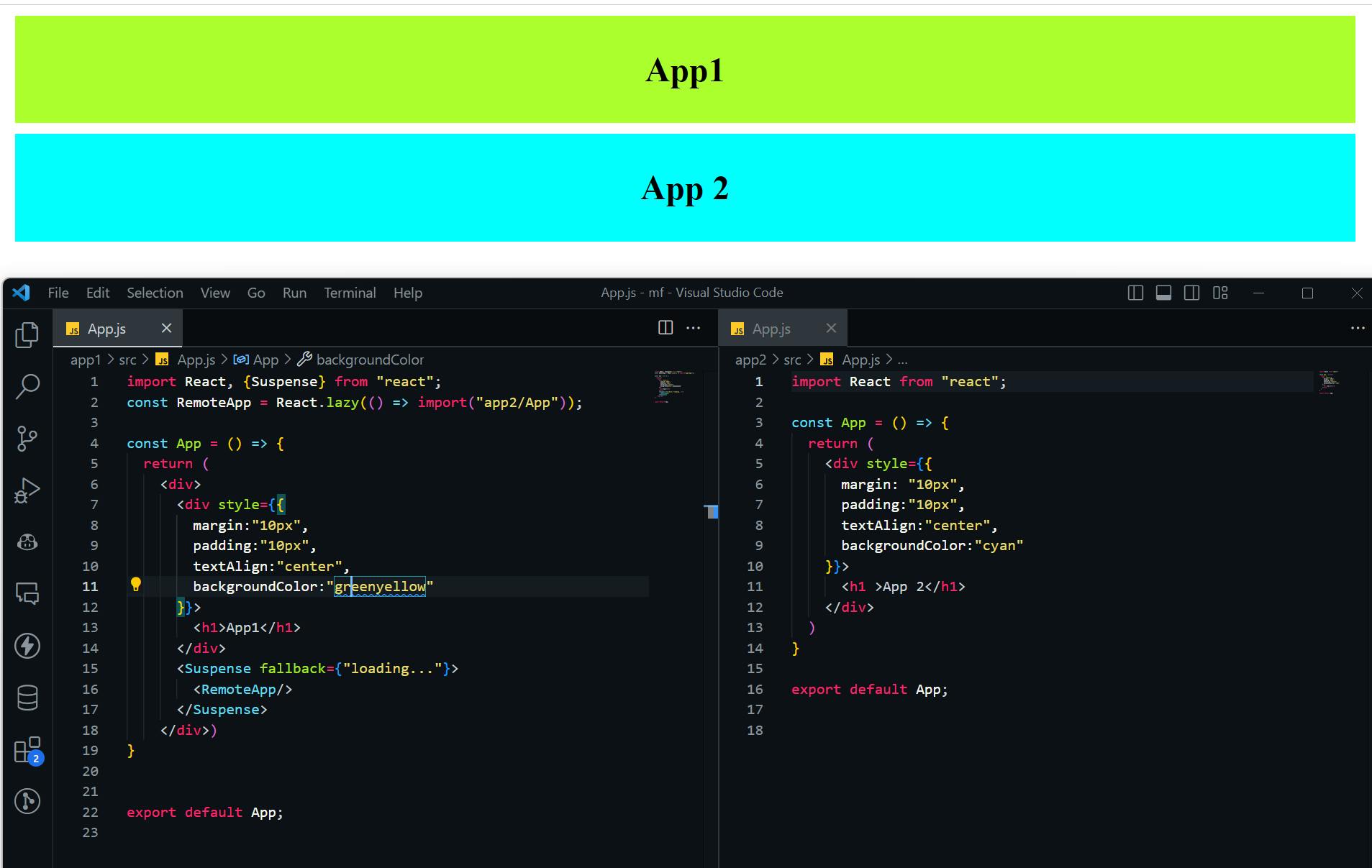Micro frontends can be seen as an extension of the microservices architecture pattern, but applied to the frontend layer of an application. Instead of having a monolithic frontend codebase, a micro frontend architecture enables splitting the frontend into smaller, loosely coupled, and independently deployable units called micro frontends. Each micro frontend represents a self-contained functionality or feature within the application.
Micro frontends can be built using different technologies and frameworks, allowing teams to work independently and choose the tools that best suit their needs. This technology agnosticism is a key aspect of micro frontends, as it promotes flexibility, innovation, and the ability to leverage different frontend frameworks or libraries within the same application.
Benefits of Micro Frontends:
Independent Development and Deployment: With micro frontends, different teams can work independently on their respective parts of the application. This allows for parallel development, faster iterations, and the ability to deploy changes to specific micro frontends without affecting the entire application. Teams can choose their preferred technology stack and maintain autonomy over their codebase.
Scalability and Maintainability: Micro frontends enable the scalability of teams and applications. By breaking down the frontend into smaller units, it becomes easier to manage and maintain codebases. Teams can focus on specific features, reducing the cognitive load and enabling efficient code reuse across different projects.
Improved User Experience: Micro frontends enable teams to deliver features and updates more frequently, resulting in a faster time to market. This agile approach allows for a better user experience as new functionalities can be rolled out incrementally without disrupting the entire application.
Technology Diversity and Upgradability: Micro frontends encourage the adoption of different frontend technologies within the same application. Teams can choose the most suitable tools for their specific needs, experiment with new frameworks, and easily upgrade or replace individual micro frontends without affecting the overall application.
Challenges and Considerations:
While micro frontends offer numerous benefits, they also introduce certain challenges that need to be considered:
Communication and Data Sharing: As micro frontends operate independently, establishing communication and data sharing between them requires careful planning. Techniques such as event-driven architectures, pub-sub patterns, or shared state management can be used to facilitate inter-micro frontend communication.
Performance and Loading Strategies: Loading multiple micro frontends can impact the performance of an application. Employing strategies like lazy loading, code splitting, and intelligent caching can mitigate performance issues and ensure a smooth user experience.
Testing and Integration: Testing individual micro frontends and ensuring their seamless integration poses a challenge. Implementing comprehensive end-to-end testing, contract testing, and integration testing can help address these concerns.
Implementation Strategies:
Implementing micro frontends requires careful consideration of the architecture and the underlying technologies. Here are some common strategies and approaches for adopting micro frontends, ordered by most to least favorable in authors subjective opinion:
iframe integration
Micro frontends offer the flexibility of being encapsulated within iframes, enabling independent development and deployment of each micro frontend. Communication between micro frontends can be established through postMessage APIs or other cross-iframe communication mechanisms.
I won't recommended iframes approach, as their capabilities are limited. This approach is best suited for scenarios where a legacy frontend exists, and there is a need to replace specific parts with a modern framework. Using iframes simplifies the process of modifying legacy code, making it a convenient option in such cases.
In this example App1 (running on port 3001) is our main app that consumes App2 (running on port 3002) using iframe. The connection is done using postMessege API.

Build-Time Integration
In this approach, each micro frontend is developed as an independent application and then seamlessly integrated at build time to create a cohesive frontend. Various techniques can be employed for this integration, such as server-side includes, static site generation, or build tools that enable the composition of multiple micro frontends into a single bundle.
This approach offers a viable solution. However, I would recommend using a server-side version with multiple separate repositories instead. If you opt for a single repository with separate folders for each frontend and a parent build script that combines them, there is an increased risk of inadvertently importing files from one micro frontend into another. This can unintentionally lead to the creation of a monolithic architecture, undermining the intended micro frontend structure.
Here I use App1 as a main app that uses WebPack multi-entry to build both app1 and app2. Also, I use two root div one for each application.

Communication is implemented using postMessege API

Edge-Side Integration
In this approach, the integration of micro frontends happens at the edge server level. The server acts as a proxy, routing requests to the appropriate micro frontend based on predefined rules or conditions. This approach can leverage edge computing platforms or reverse proxy servers like Nginx.
A good approach for cases when you want to have multiple full-page frontends, e.g. if you have e-commerce you could have one storefront frontend for clients and a second control panel frontend.
In this example, we use WebPacks DevServer proxy to redirect users to separate blog micro-frontend. E.i. Home is running on port 3001, Blog is running on port 3002 and using Proxy we mask 3002 and instead access it using localhost:3001/app2

Client-Side Integration (Module Federation)
This approach involves loading and composing micro frontends on the client-side using JavaScript. This can be achieved by leveraging frameworks or libraries that support the dynamic loading and rendering of components. Examples of these include single-spa, Web Components, or module bundlers like webpack.
If it meets your requirements, this could be the best approach. The main and most significant advantage of this method is its ability to use Module Federation. The problem with other approaches is that they create multiple independent frontends, each generating a bundle file that includes a large number of npm packages. Therefore, when a client lands on your page, they download three frontend bundles that all contain the same dependencies, such as react, react-dom, lodash, redux, etc.
By using Module Federation, you can share dependencies, meaning that when your first frontend loads react-dom, other frontends can use it instead of loading their own version of the dependency. Moreover, you can export any file from one frontend and import it into another, making data/state sharing as simple as with a monolithic frontend, while also benefiting from the advantages of a micro-frontend architecture.

It's important to note that there isn't a one-size-fits-all approach to implementing micro frontends. The choice of strategy depends on factors such as the complexity of the application, team structure, deployment pipeline, and the desired level of independence among micro frontends. Careful planning and architectural considerations are essential to ensure a smooth and efficient implementation.
Micro frontends represent a paradigm shift in frontend development, empowering teams to build scalable, modular, and maintainable applications. By breaking down the frontend layer into independent and technology-agnostic units, organizations can achieve faster development cycles, improved flexibility, and an enhanced user experience. However, it is essential to carefully consider the challenges and invest in suitable tools, testing strategies, and communication mechanisms to reap the full benefits of micro frontends. As the web development landscape continues to evolve, micro frontends offer an exciting avenue for building robust and adaptable applications in a rapidly changing digital world.
